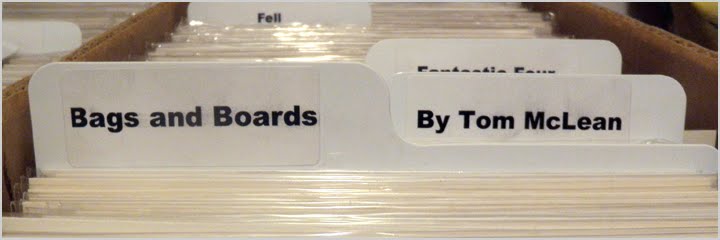Word has been spreading today that one of the all-time great comics artists, Al Williamson, has died at the age of 79.
I never met him, so I’ll let others fill in the details of his life and career, but I love his art and he remains one of my favorite artists of all time.
Like most fans of my generation, I first saw his work on Marvel’s adaptation of The Empire Strikes Back and was completely and totally blown away. I loved Marvel’s Star Wars series, which was the first series I really collected as both a young reader and later as a collector. And even though I loved the series when it was drawn with incredible energy and dynamism by Carmine Infantino, I always wished deep down that there was an artist out there who could also make the comic look more like the movie.
And that artist was Al Williamson, who was working with co-penciler Carlos Garzon and writer Archie Goodwin on adapting Empire. It was gorgeous stuff, conveying the romance, the humor and the adventure while still capturing the special appeal and look of an actor like Harrison Ford. I loved it and was more than a bit disappointed when Williamson didn’t stick around as artist after Empire.
But he wasn’t gone completely. I didn’t have access at the time to the Star Wars comic strips that Williamson was doing with Goodwin because my newspaper didn’t carry it. But I definitely looked forward to Williamson’s return with Star Wars #50, which came out about a year after the Empire movie and was another landmark for the series.
I soon drifted away from comics and came back about four years later, thrilled to find one of the first issues of Star Wars I picked up when I started reading comics again was a “lost” Goodwin-Williamson job in issue #98. Jumping back in, I found that he, Garzon and Goodwin also had adapted Return of the Jedi in a four-issue series, as well as another classic Harrison Ford role in Blade Runner.
In the 1980s and 1990s, Williamson was a prominent inker at Marvel in particular, giving a lot of my favorite comics from Wolverine to Daredevil a distinctive, professional polish.
His Star Wars work was rediscovered along with the entire Star Wars phenomenon in the early 1990s. Dark Horse republished not just his Empire and Jedi work, but also turned the newspaper strips into color comics for which Williamson contributed the occasional new page and covers.
I also finally got a chance to see Williamson draw one of his favorite characters when Marvel published in 1995 a two-issue Flash Gordon series drawn by Williamson and written by Mark Schultz.
The 1990s also finally gave me a chance to read some of the work Williamson had done early in his career thanks to Gemstone Publishing’s reprinting of the EC Comics line in a new line of color comics and annuals. There I got to see at last the stuff Williamson had done early on, and it was as classically beautiful as I could have hoped. I particularly liked his adaptation of the classic Ray Bradbury short story “The Sound of Thunder,” in Weird Science-Fantasy.
I never got to meet or speak with Williamson, so I have no idea beyond others’ recollections what he was like as a person. There’s still lots of Williamson art to enjoy, with IDW adding this summer Secret Agent Corrigan to its Library of American Comics series of reprints.
Looking through samples of his work today, I can’t help but be struck by the detail and care that he obviously put into creating both fantastic worlds and also believable characters. I wish more of today’s comics artists could capture even a fraction of Williamson’s ability to make his characters look like they’re real flesh-and-blood humans, or convey a character’s attitude so clearly with a natural pose.
I’m sorry to hear he’s gone. But I know that even if I should someday stop reading comics completely, I will always never forget the beauty of his artwork and the impact it had on me as a both a young comics reader and as an adult admirer of art.
I’ll finish with a small sampling of Al Williamson images I pulled from my collection and scanned today. If you’ve never seen it, I envy you and encourage you to seek out his work. It’s worth it.
Splash page for “Upheaval” from Weird Science-Fantasy #24 (EC Comics, 1954), as reprinted in Weird Science-Fantasy #2, (Gemstone Publishing, Feb. 1993)
Splash page to Bradbury’s “Sound of Thunder,” from Weird Science-Fantasy #25 (EC Comics, Sept. 1954), reprinted in Weird Science-Fantasy #3 (Gemstone Publishing, May 1993)
Splash page for “Food for Thought,” from Incredible Science Fiction #32 (EC Comics, Dec. 1955) reprinted in Incredible Science-Fiction #10 (Gemstone Publishing, Feb. 1995)
A 1970 strip from Secret Agent Corrigan taken from Library of American Comics #1, IDW’s Free Comic Book Day release in 2010.
Interior Empire page showing a bit more of this scene than the final movie did, also from Marvel Super Special #16 (Marvel, 1980).
Interior page from Star Wars #50 (Marvel, Aug. 1981).
Page from the adaptation of Blade Runner appearing in Marvel Super Special #22 (Marvel, Sept. 1982).
Key scene from Return of the Jedi, as seen in Marvel Super Special #27 (Marvel, 1983).
Splash page from Classic Star Wars: The Vandelhelm Mission (Dark Horse, March 1995). This one-shot featured a re-colored reprint of Star Wars #98 (Marvel, Aug. 1985).
Page from Flash Gordon #2 (Marvel, July 1995).




















